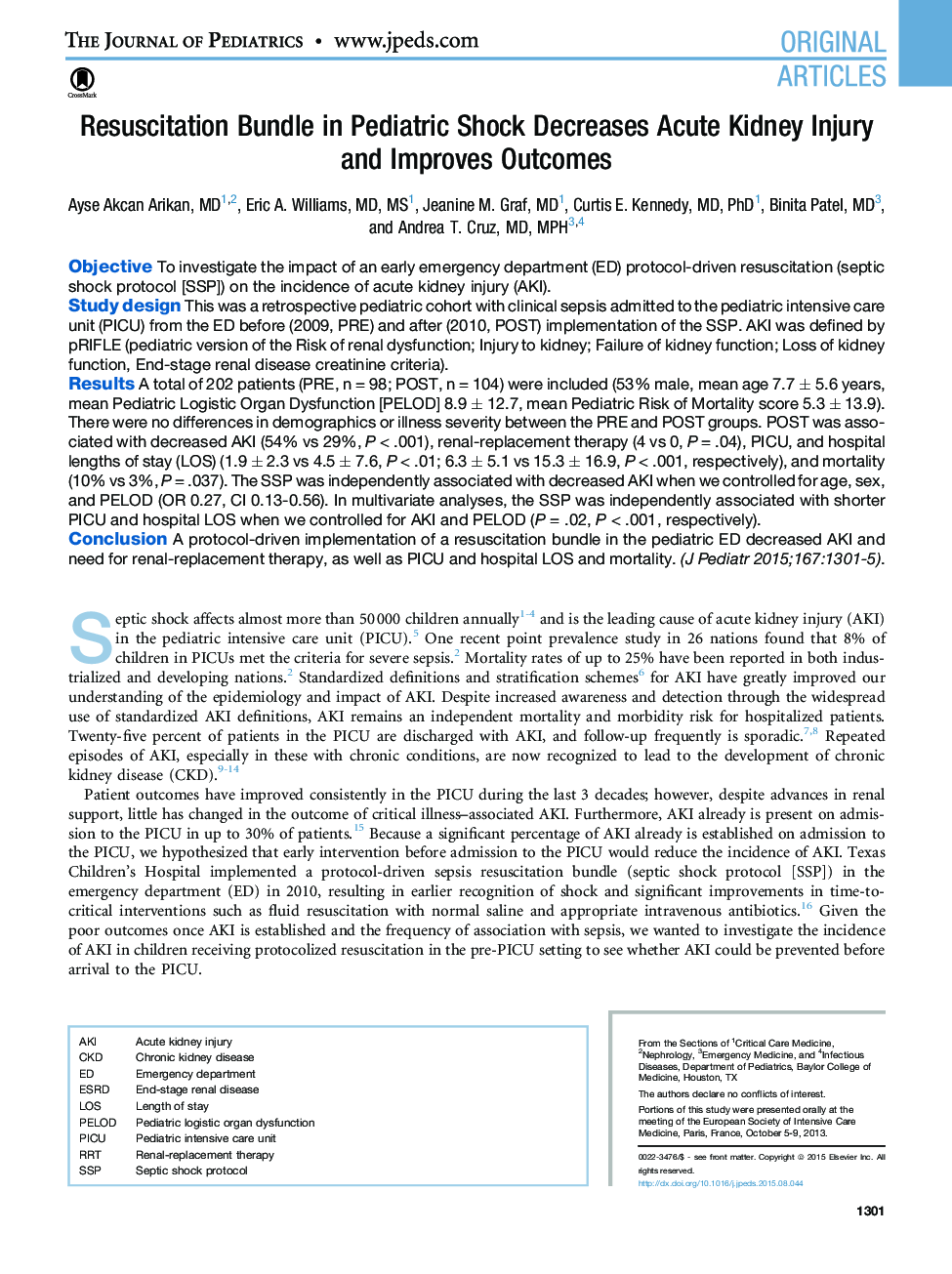| Article ID | Journal | Published Year | Pages | File Type |
|---|---|---|---|---|
| 6219718 | The Journal of Pediatrics | 2015 | 6 Pages |
ObjectiveTo investigate the impact of an early emergency department (ED) protocol-driven resuscitation (septic shock protocol [SSP]) on the incidence of acute kidney injury (AKI).Study designThis was a retrospective pediatric cohort with clinical sepsis admitted to the pediatric intensive care unit (PICU) from the ED before (2009, PRE) and after (2010, POST) implementation of the SSP. AKI was defined by pRIFLE (pediatric version of the Risk of renal dysfunction; Injury to kidney; Failure of kidney function; Loss of kidney function, End-stage renal disease creatinine criteria).ResultsA total of 202 patients (PRE, n = 98; POST, n = 104) were included (53% male, mean age 7.7 ± 5.6 years, mean Pediatric Logistic Organ Dysfunction [PELOD] 8.9 ± 12.7, mean Pediatric Risk of Mortality score 5.3 ± 13.9). There were no differences in demographics or illness severity between the PRE and POST groups. POST was associated with decreased AKI (54% vs 29%, P < .001), renal-replacement therapy (4 vs 0, P = .04), PICU, and hospital lengths of stay (LOS) (1.9 ± 2.3 vs 4.5 ± 7.6, P < .01; 6.3 ± 5.1 vs 15.3 ± 16.9, P < .001, respectively), and mortality (10% vs 3%, P = .037). The SSP was independently associated with decreased AKI when we controlled for age, sex, and PELOD (OR 0.27, CI 0.13-0.56). In multivariate analyses, the SSP was independently associated with shorter PICU and hospital LOS when we controlled for AKI and PELOD (P = .02, P < .001, respectively).ConclusionA protocol-driven implementation of a resuscitation bundle in the pediatric ED decreased AKI and need for renal-replacement therapy, as well as PICU and hospital LOS and mortality.
